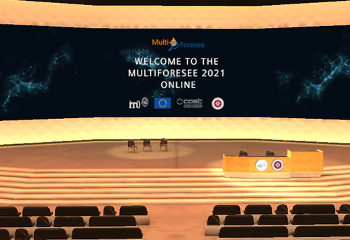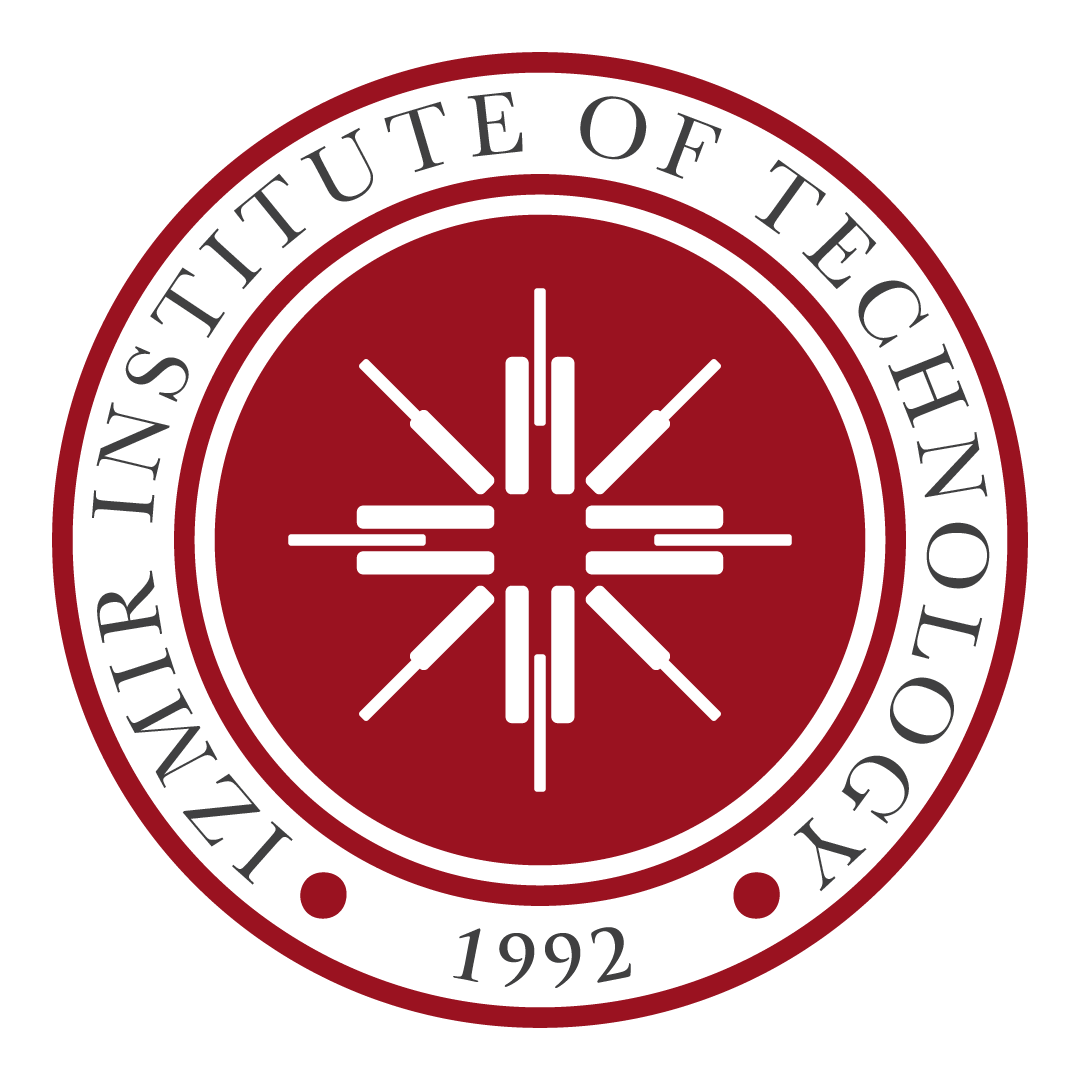MultiForesee 2021’e çevrimiçi evsahipliği yapıyoruz
-
Date & Time:
- Temmuz 12 - 14, 2021
- 10:00 to 17:00
-
Venue:
ÇEVRİMİÇİ
-
More Info:
Bünyesinde yer aldığımız ve bu yaz itibarı ile süresi dolacak olan COST aksiyonu bünyesinde her sene yapılan MultiForesee konferansı, bu yıl dördüncü ve son kez 12-14 Temmuz 2021 tarihleri arasında çevrimiçi olarak İYTE ve İTÜ işbirliği ile düzenlenecektir. Ücretsiz kayıt olabileceğiniz konferansın ayrıntılarına multiforesee2021.com sitesinden ulaşabilirsiniz.
Adli bulguların yenilikçi ve çok kipli şekilde görüntülenmesi ve incelenmesi tekniklerinin geliştirilmesini amaç edinen bu aksiyon sayesinde adli bilişim uzmanlarının, fizikçilerin, veri analizi ve makine öğrenmesi üzerine çalışan bilgisayar bilimcilerin ve biyokimyagerlerin bir araya geldiği çok disiplinli bir platform oluşmuştur. Bu doğrultuda, düzenlediğimiz konferans programında da yine farklı disiplinlerden araştırmacıların çalışmalarına ve davetli konuşmacılara yer verilmiştir.
Konferansı daha etkileşimli ve ilgi çekici hale getirmek adına sanal bir platform yaratılmıştır. Katılımcıların avatarları ile farklı mekanlarda dolaşabilecekleri, konuşmaları dinleyebilecekleri, toplantılar yapabilecekleri, sohbet edebilecekleri ve hatta eğlenebilecekleri bu sanal dünyaya, Windows ve MAC işletim sistemine sahip bilgisayarlara kurulabilen bir uygulama aracılığı ve kayıt bilgileri ile ulaşılabilir. Sanal platformumuzdan bazı görselleri websitesinde bulabilirsiniz.
Davetli konuşmacı listesi ve detayları (İngilizce) ise şöyle:
Prof. Lorna Dawson, 12.07.2021 – 14:45-15:30:
Professor Lorna Dawson is Head of the Soil Forensics Group within the Environmental and Biochemical Sciences group at the James Hutton Institute, and has over 30 years’ experience in managing and conducting research in soil and plant interactions, in particular its application in the criminal justice system. She was awarded a CBE in the Queen’s Birthday Honours list in June 2018.
Title: The rocky road to acceptance of soil as a tool in criminal investigations
In my talk I will discuss the development of the discipline of forensic soil science and how our work has contributed to a rapid evolution from a ‘cottage industry’ to a trusted quantitative accredited system within the UK. I will show how new developments and innovations are invaluable in forensic applications but require funding, experimentation, validation, cooperation, collaboration, peer review, many sleepless nights …..and they all require to be fully tested before being ‘field ready’ ….. never mind what is required for that innovative and exciting scientific approach (and of course you) to be ‘court ready’. This high level of testing varies across the legal systems of the world, but the attributes of curiosity, integrity, honesty and adherence to good ethical principles is fundamental in all nations and legal systems of the world, and is vitally important across all disciplines.
————————————————————————————————————————————————
Prof. Joseph Almog, 12.07.2021 – 15:45-16:30:
Prof. Joseph Almog works at the Casali Institute of Applied Chemistry at the Hebrew University of Jerusalem and has made his name in the forensic science community mainly in the research and development of new reagents for the chemical development of latent fingerprints. Other topics on which he worked in depth are the detection and identification of explosives and the development of field diagnostic tests for forensic work. Under his guidance, a number of diagnostic field devices have been created and became invaluable tools in crime investigations.
Title: Unsolved Problems in Forensic Science: History and Future
Our first forensic R&D program was prepared in 1976. As a preliminary step, we disseminated among the academic community in Israel a list of topics in forensic science which required scientific and technological solutions. The problems were selected by two factors: How pressing they were – Israel has its own order of priorities – and the prospect of reaching solutions, based on the level of existing manpower and budget. I will present some of the topics which constituted that list; among them: deciphering indented writing, shooters identification, fingerprint visualization on problematic surfaces, and what happened to them worldwide since that time. I will also discuss briefly an ongoing biometrics research which is carried out under the concept of “proactive forensic science”.
————————————————————————————————————————————————
Prof. Mark Nixon, 13.07.2021 – 11:00-11:45:
Prof. Mark Nixon is a Professor in Computer Vision at the School of Electronics and Computer Science, University of Southampton. His research interests are in image processing and computer vision. He has helped to develop new techniques for static and moving shape extraction (both parametric and non-parametric) which have found application in automatic face and automatic gait recognition and in medical image analysis. He was one of the early workers in face recognition, later came to pioneer gait recognition and later joined the pioneers of ear biometrics, and he is currently working on soft biometrics where people are recognized by human attributes. He is currently the President of the IEEE Biometrics Council and Vice Chair IEEE PSPB. He is a Fellow of the IET, Fellow of the IAPR (for services to biometrics and computer vision) and the Distinuished Fellow of the BMVA 2015.
Title: Biometrics, Forensics and Identity Science: Can gait, ear and soft biometrics be used in forensics?
————————————————————————————————————————————————
Prof. Anil K. Jain, 13.07.2021 – 16:15-17:00:
Prof. Anil K. Jain (PhD, 1973, Ohio State University; B. Tech., IIT Kanpur) is a University Distinguished Professor at Michigan State University where he conducts research in pattern recognition, machine learning, computer vision, and biometrics recognition. He was a member of the United States Defense Science Board and Forensics Science Standards Board. His prizes include Guggenheim, Humboldt, Fulbright, and King-Sun Fu Prize. For advancing pattern recognition, Jain was awarded Doctor Honoris Causa by Universidad Autónoma de Madrid. He was Editor-in-Chief of the IEEE Transactions on Pattern Analysis and Machine Intelligence and is a Fellow of ACM, IEEE, AAAS, and SPIE.
————————————————————————————————————————————————
Prof. Alice J. O’Toole, 13.07.2021 – 17:15-18:00:
Prof. Alice O’Toole is a professor in the School of Behavioral and Brain Sciences at the University of Texas at Dallas. Her research focuses on human perception and memory for faces, using psychological, computational, and neuroscience-based methods. She has studied human and computer-based face recognition, and has conducted experiments to compare expert forensic facial examiners with untrained individuals. Dr. O’Toole also studies person recognition from the face, body, and gait. She currently serves as an associate editor for for the British Journal of Psychology and for the IEEE:Transactions on Biometrics, Behavior & Identity Science, has been named a fellow by the American Psychological Association, and holds the Aage and Margareta Møller Endowed Chair. Dr. O’Toole has been the recipient of an Alexander von Humboldt Research Fellowship, and has received research funding from NIMH, DARPA, IARPA, NEI, and the National Institute of Justice.
Title: Understanding face representations in Deep convolutional Neural networks: Turning the black box white
Computer-based face recognition has improved markedly in recent years with the advent of deep learning and convolutional neural networks (DCNNs). These networks are trained with large numbers of uncontrolled, “in-the-wild” face images The primary accomplishment of DCNNs over previous algorithms is that they can identify faces in relatively unconstrained viewing conditions (e.g., over changes in viewpoint, illumination, appearance). Although these networks perform with accuracy unimaginable just a decade ago, the face representations they generate are not well understood, making it challenging to anticipate and mitigate identification errors. In this talk, I will present a series of computational experiments aimed at dissecting face codes generated by DCNNs. The experiments indicate that DCNN-generated face descriptors retain detailed information about face identity and about the actual image processed by the network. This representation is highly structured by the types of image-based variation encountered in the training, and is remarkably robust against network damage. In summary, DCNN face codes present a fundamentally new solution to the problem of identifying faces in uncontrolled viewing environments.
————————————————————————————————————————————————
Dr. Roberto King, 14.07.2021 – 11:00-11:45:
Dr. Roberto King is the Chief Technology Officer at Foster+Freeman Forensic Science Innovation where he has been working in R&D for more than 7 years. He was awarded the Haque and Bose Award in 2017 by the Fingerprint Society for his contributions to forensic science research. He has a PhD in inorganic chemistry during which he discovered a ground breaking new technique in forensics which involves the transfer of inks that allow the lifting of fingerprints from bodies and bullets.
Title: Redefining possibilities: The development of latent fingermarks from cartridge casings and (cleaned) metals using a novel vapour phase technique
In 2019, the culmination of a decade of research, resulted in the introduction of RECOVER Latent Fingerprint Technology to the worldwide forensic community. The last year has been pivotal in establishing this process within laboratories and learning about new applications and opportunities for this revolutionary fuming technique. Requiring only a small amount of chemical reagent, and a typical processing time of less than 40 minutes, this cost-effective, and automated, technology serves as the only plausible method of recovering latent fingermarks from exhibit types that have previously been regarded as ‘impossible’ or ‘once in a lifetime’. The development of fingermarks from serious crime exhibit types (fired/unspent ammunition casings, knife blades, IED fragments) will be discussed, with attention given to the importance and lessons learned regarding the imaging of such evidence types. Peripheral imaging, non-visible imaging and episcopic imaging will all be discussed, with relevant examples shown. Comments will also be made regarding casework success in both recent and cold case investigations.
————————————————————————————————————————————————


